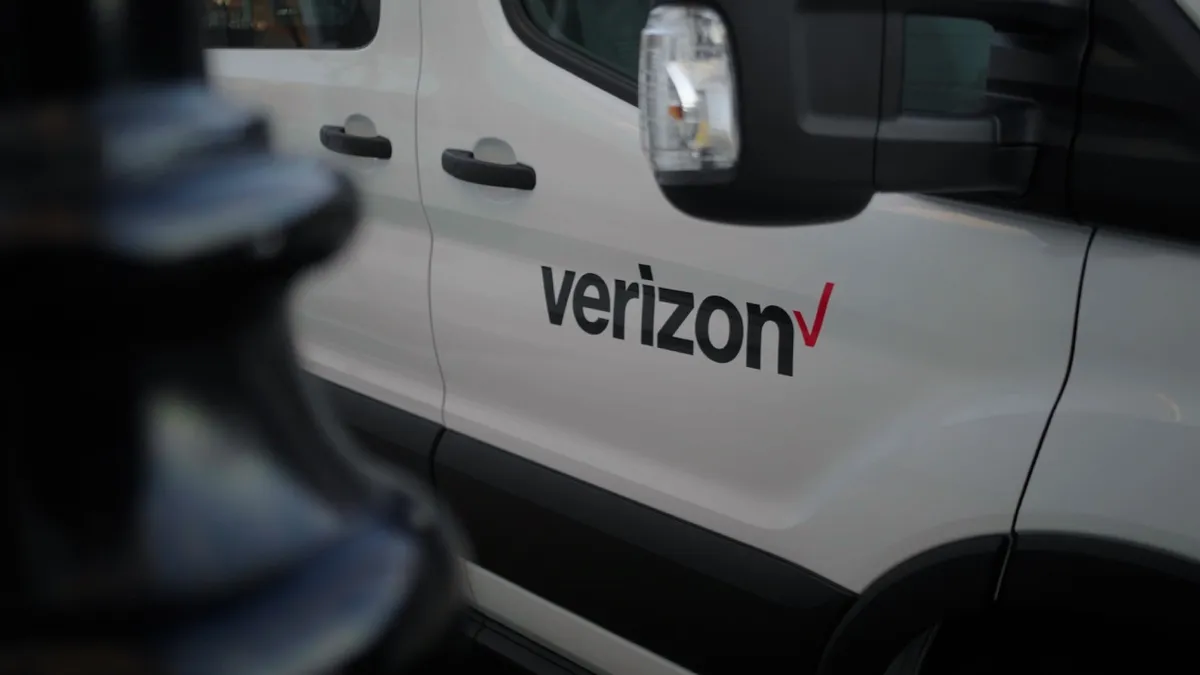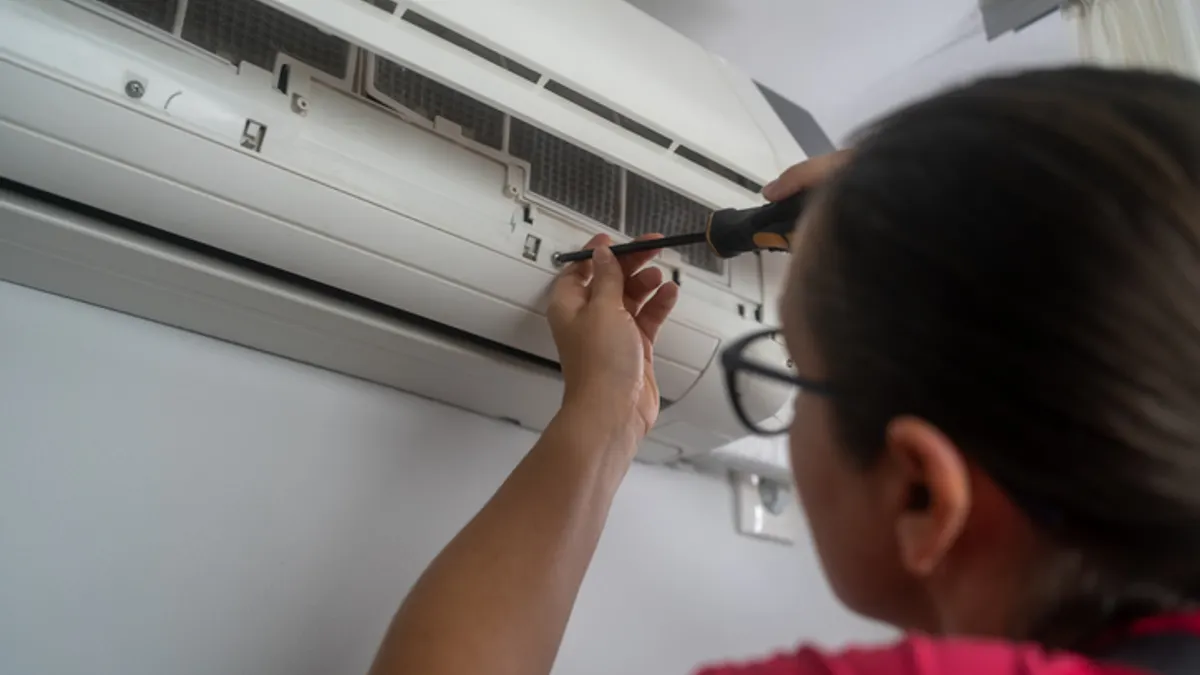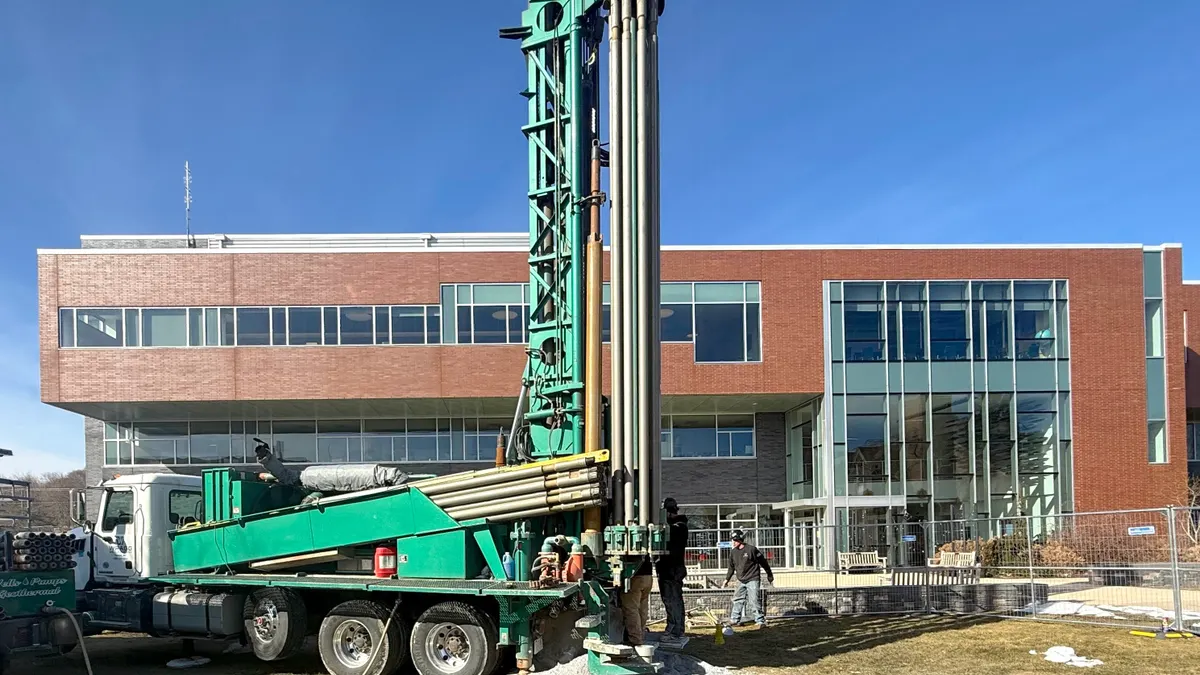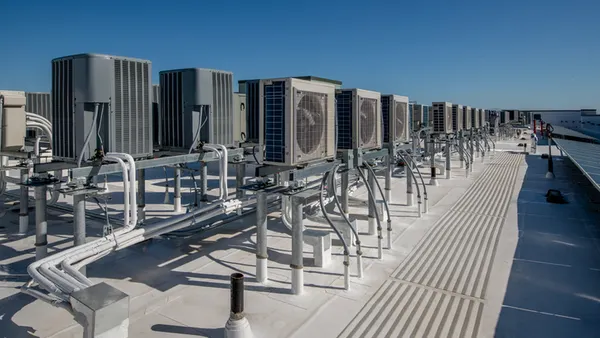Dive Brief:
- Verizon debuted its first U.S. electric fleet earlier this year in Rhode Island and stated plans to expand the effort, the company said May 13.
- The Rhode Island electric fleet includes 40 Ford E-Transit vans and five Ford Lightning trucks supported by 25 two-port Level 2 charging stations and two direct current fast charging stations, which will be used by technicians operating the company’s Fios vehicles in the northern Providence region. The Smithfield facility, which Verizon spent $4.4 million to electrify, is the first of eight fleet depots the telecommunications company hopes to electrify by the end of 2024, Verizon Director of Fleet Support and Strategy Neha Choudhary said in an email to Facilities Dive.
- “Verizon’s green fleet will play a pivotal role in achieving our sustainability goals, aiming to achieve a 53% reduction in our operational emissions by 2030 and operational net-zero emissions by 2035,” Jerry Karnick, senior vice president of corporate assets, environment, health & safety at Verizon, said in a statement.
Dive Insight:
The seven additional sites Verizon targeted for electrification are in New England and the mid-Atlantic states, the company said. These early sites “have a larger count of fleet vehicles,” Choudhary said.
While the company uses “charging company software” to schedule off-peak charging sessions at electrified depots and for home charging, it may also use “on-the-go chargers” as needed, Choudhary added.
Verizon began planning for fleet electrification in 2021, the company said. Looking at vehicle use data from its Verizon Connect fleet management software, including utilization, miles driven, vehicle location and wear and tear metrics, company planners determined how many EVs it would deploy at each electrified garage work center, the “type, extent and location of charging infrastructure” and how it would store and maintain its electric fleet vehicles, Verizon said.
Most of Verizon’s garage work centers are suitable for electrification, but the company has a few more challenging sites “where immediate construction cannot begin since the property has flood zones or limited parking space,” Choudhary said.
More broadly, Verizon’s electrification efforts have run up against challenges such as the speed of building out charging infrastructure, available electrical capacity in some locations, delays in utility upgrades and local permitting challenges, Choudhary said.
Electric vehicle procurement in general and “limitations with battery ranges and [a] lack of charging infrastructure” for heavier work vehicles are ongoing challenges for service fleet electrification, Choudhary added.
Verizon’s Fios technicians will use the electric F-150 and E-Transit vehicles to service customers in northeastern Rhode Island, the company said.
These medium- and light-duty vehicles have proven easier for Verizon to procure as production has ramped up, though “supply chain delays for batteries” remain a problem, Choudhary said. It’s more difficult to electrify specialized medium- and heavy-duty work vehicles, such as digger derricks, bucket trucks and cable splicer vehicles, “due to limitations [of] battery range and lack of charging infrastructure,” Choudhary added.
Verizon’s bucket trucks “will be the next vehicle to go electric,” according to a May 13 report from a local news outlet, WJAR. But “the line vehicles will always have to run on gas” because they have to run continuously in the field, WJAR reported.
The heavy electric vehicle segment “is still evolving,” Choudhary said.










